Land Art – Art that is made directly in the landscape, sculpting the land itself into earthworks or making structures in the landscape using natural materials such as rock or twigs
To remember what land art is, recall the following mnemonic:
She landed first place for art (land art), she produced this using just the landscape.
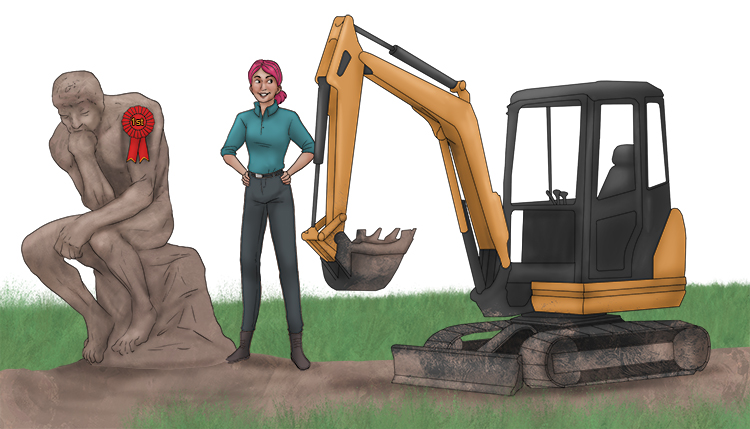
Land art is a hugely versatile type of artwork and no piece will ever be the same.
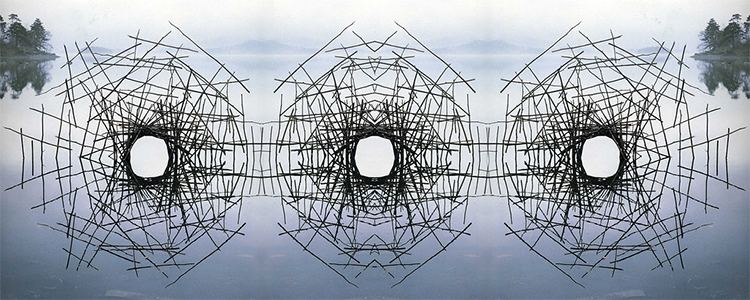
"Andy Goldsworthy - Montage by iuri - Sticks Framing a Lake (2560x1024)" by iurikothe is licensed under CC BY 2.0.
This work depicts twigs and branches in an order such that they form a semicircle above the water. The water reflects the image of the semicircle formed by the sticks completely. The water is so clear and reflective that the image is reflected without any blurring, and the water surface line to separate the real sticks from the reflected image can no longer be seen.
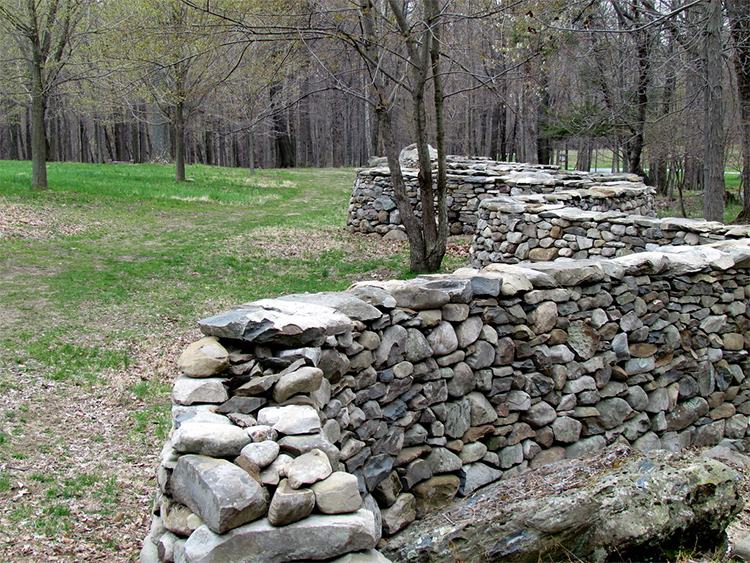
"Andy Goldsworthy Five Men, Seventeen Days, Fifteen Boulders, One Wall Storm King Art Center NY 2619" by bobistraveling is licensed under CC BY 2.0.
Using 250 tons of stone found on the property, Goldsworthy and five men altered a 309ft dilapidated wall over 17 days. The wall now winds around 15 boulders along a grove of trees.
Land Art Project
We already have an example of a land art project you can try in the Andy Goldsworthy Art Project section of Mammoth Memory. However, there are many different ways to create land art! For this project, we're going to use water to our advantage, like the first example picture (although bare in mind the example above has been edited to look symmetrical).
You don't need a lake or a large body of water, even a reasonably sized puddle will do. However a lake, pond or the sea will be easier as far as construction goes as you will be able to push any sticks you might use into the soft earth under the water. You don't have to use sticks at all, you could use rocks, leaves, feathers, shells, pinecones and other found fruit or berries.
To create the project below, you'll need to try to find 10 rocks, two flexible sticks of the same length, some long grass, leaves or flowers and 3 large feathers. You will also need a camera. This will work best with a shallow puddle.
Place the rocks in 2 piles of 5 into the puddle. They need to be slightly closer together than the length of the sticks.
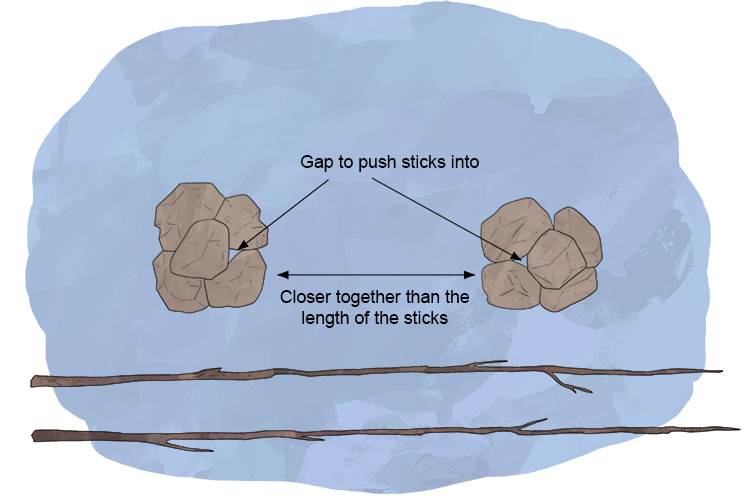
Twist the two sticks around each other and push each end in amongst the rocks. You can use a long piece of grass to tie the two ends to stop the stick from unwinding. You can also push the rocks tighter together to hold the sticks in place better.
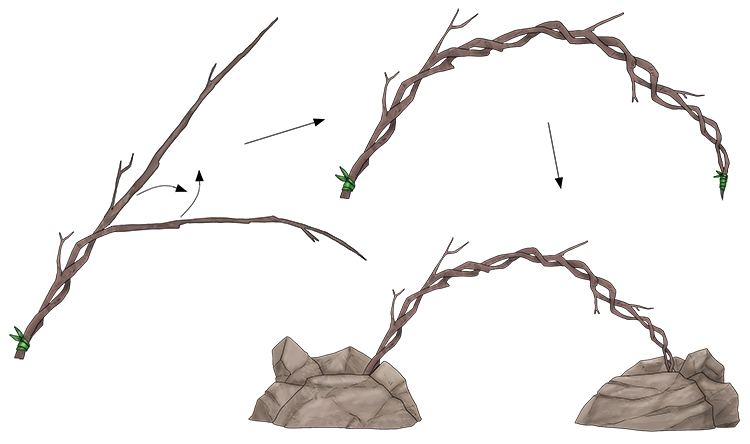
Push the ends of the feathers into the twists of the sticks.
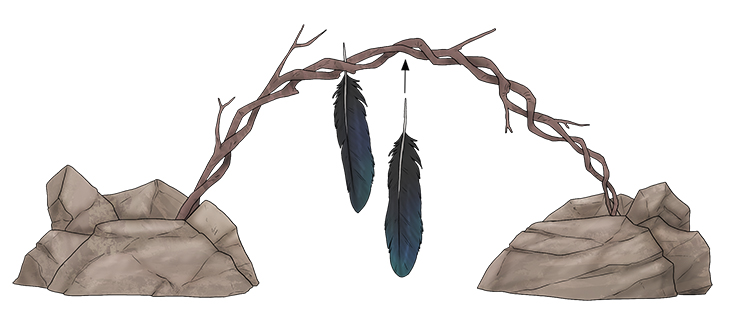
Then, where the sticks are pushed into the rocks, arrange your grass, leaves or flowers.
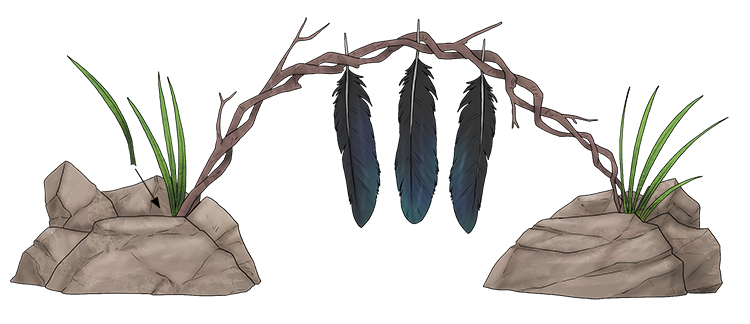
To get the best reflection photo, you'll need to position the camera to be just above the ground.
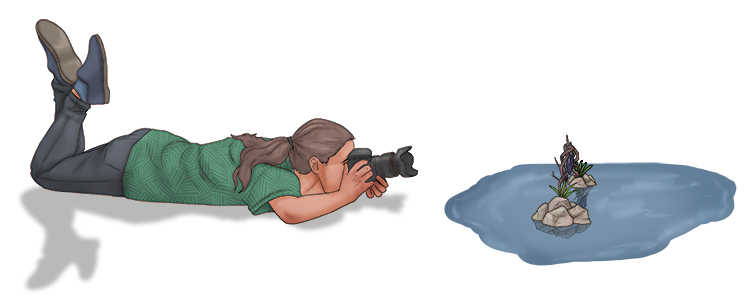
Take several photos and choose your favourite.

Land art.




